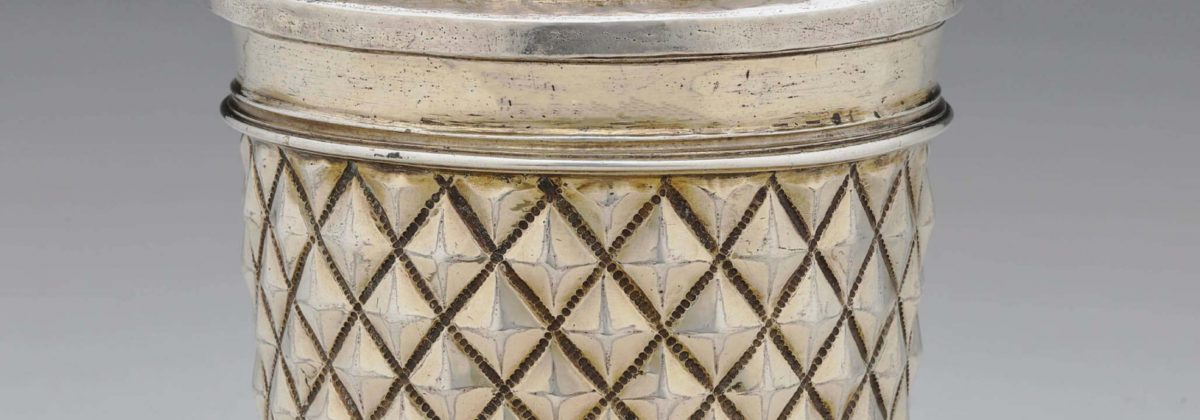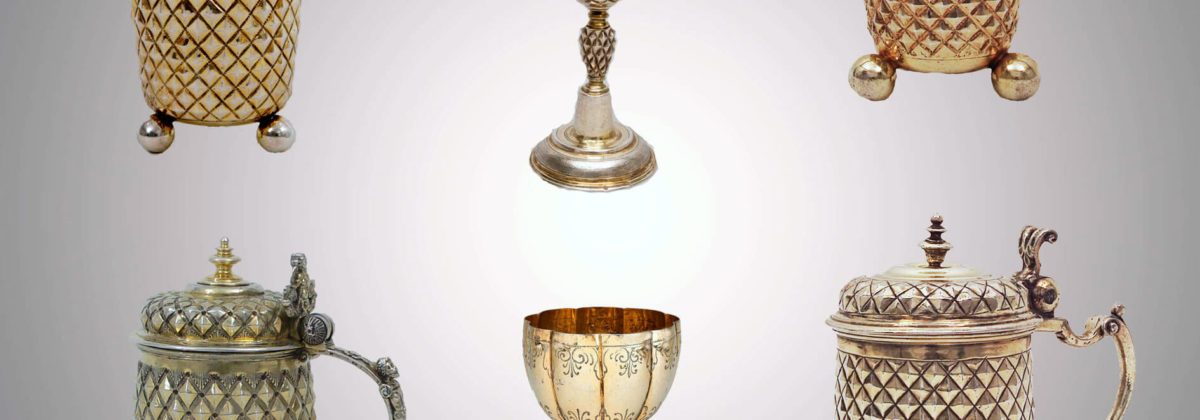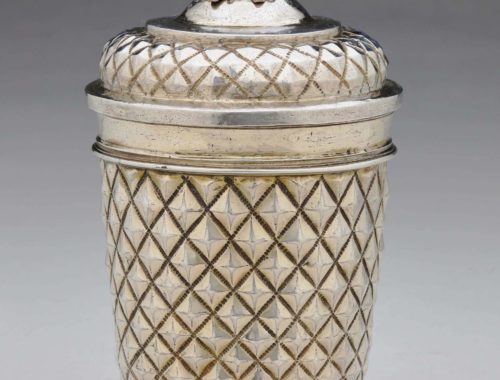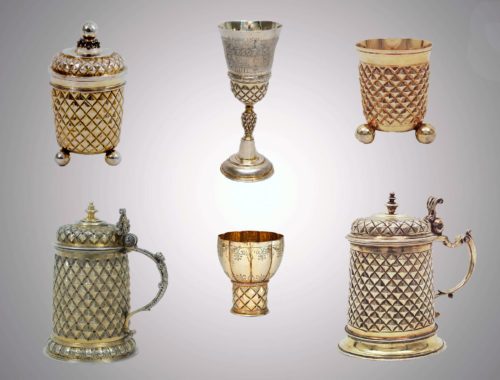Detailed Information
Silver-Gilt Baroque German Diamond-Cut Beaker and Cover
This silver-gilt beaker presents a special type of baroque ornamentation and is a wonderful example of the drinking habits in South Germany of the second half of seventeenth century. The slightly tapering towards the lower side corpus is raised on three ball-feet and has a profiled rim. The lid is also profiled and has a ball-finial, surrounded by a bunch of flowers. Splendid and impressive décor of the beaker and the lid is the so-called diamond-cut pattern or diamond décor.
Objects with diamond-cut pattern in the art of goldsmith find their inspiration in architecture. During the renaissance was used for instance in Italy a way of cutting stones for the rustication of a building, the diamond-point cut stone. The surface of the stone on a square façade is formed like a half-octahedron. On a rectangular form, it is formed in the middle a kind of edge, which distinguishes slightly or strongly. The name is given due to the similarity to the shaped diamond, which is cut in a four-sides pyramidal form.
Maker
Jonas Laminit, Protestant, was son of the goldsmith Hans Valentin. He became around 1650 a master maker and got married to Sophia Drentwett on the same year. Jonas Laminit died in 1690.
Many of his works are in European and international museums, like e.g. in the Germanisches Nationalmuseum, the Schatzkammer of the Residency in Munich and in the Kremlin Museum.
Literatur
Jürgen Christern, ‘Diamantquader’, in: Reallexikon zur Deutschen Kunstgeschichte, Bd. III (1954), S. 1424-1429.
Seling, Helmut, Die Augsburger Gold- und Silberschmiede 1529-1868, Bd. I-III, München: Beck Verlag, 1980-2007.





